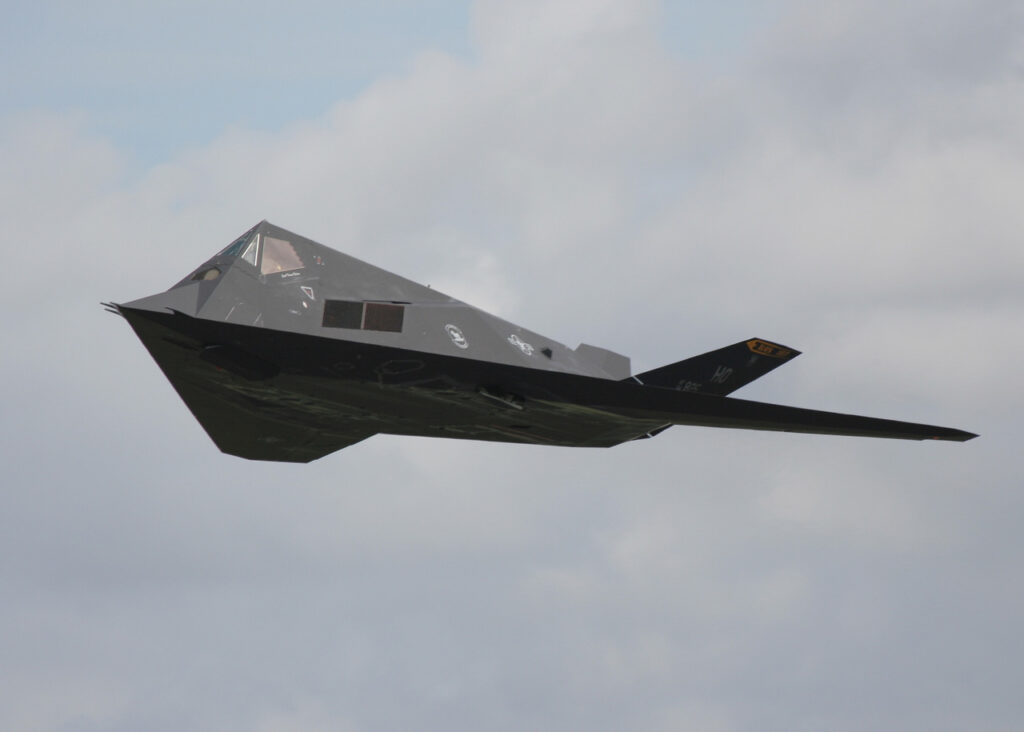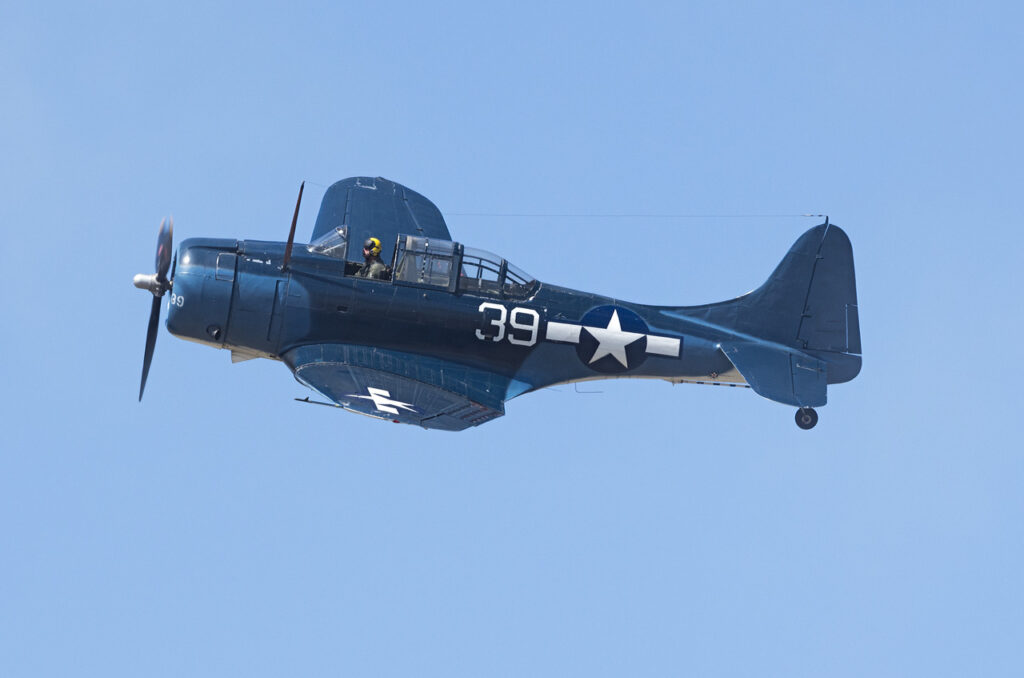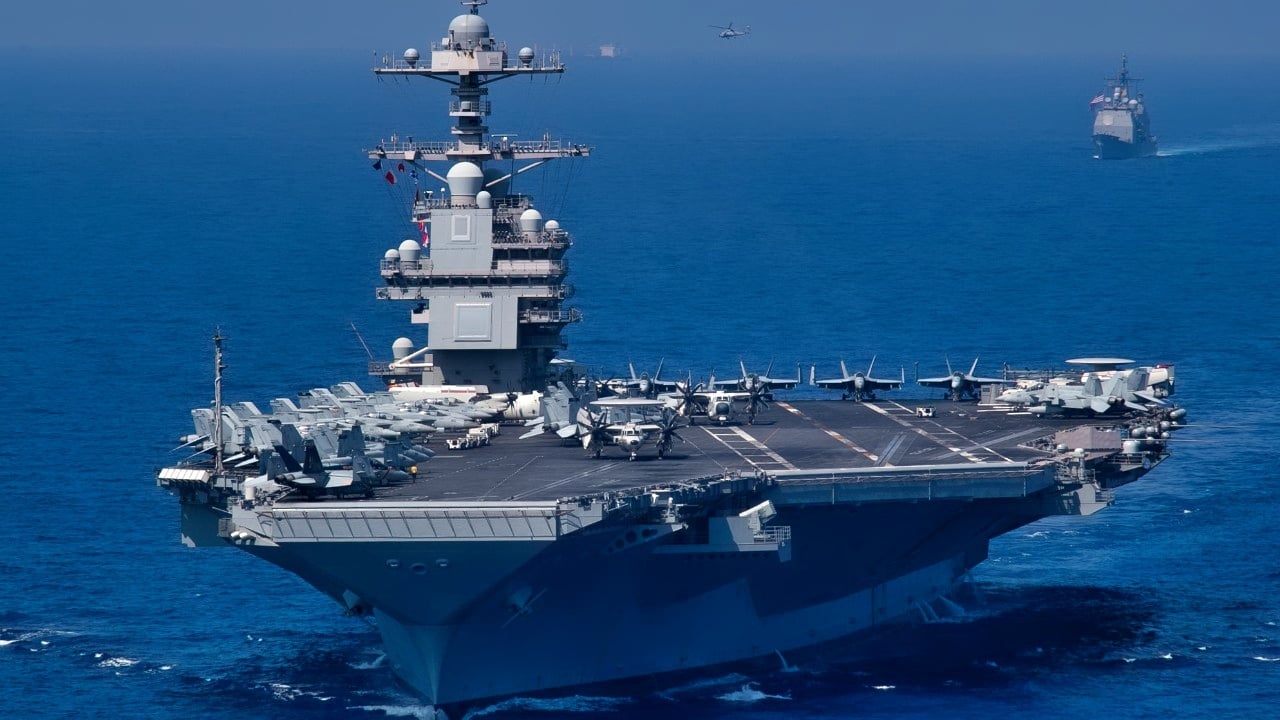
What is Flank Speed for a Ford-Class Nuclear Aircraft Carrier?
What You Need to Know: The U.S. Navy’s Ford-class carriers, led by the USS Gerald R. Ford, are the latest class designed to replace the aging Nimitz-class. With cutting-edge features like EMALS and AAG for higher sortie rates and greater efficiency, these carriers promise advanced combat capabilities. Flank speed on this aircraft carrier is over 35 miles per hour, but a warship like this just can’t speed its way out of trouble in a crisis.
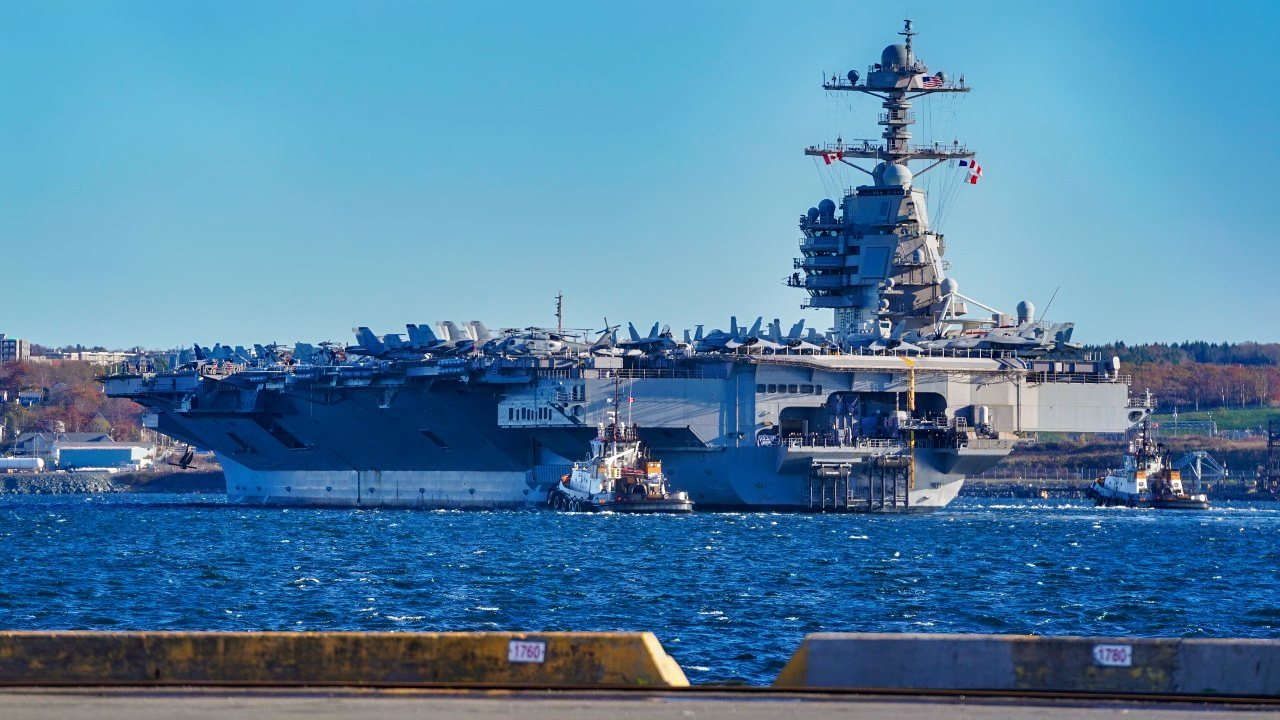
-Moreover, numerous technical issues with EMALS, AAG, advanced weapons elevators, and jet blast deflectors have led to significant delays and cost overruns, raising concerns about the value of the $13 billion price tag per carrier.
-Despite these issues, three additional Ford-class carriers are in construction, though their effectiveness against anti-access/area-denial (A2/AD) threats remains in question.
Ford-Class Carriers: A $13 Billion Bet on America’s Naval Future
America’s great love affair with the aircraft carrier continues unabated, with the creation of the Ford-class aircraft carrier. Its namesake, the USS Gerald R. Ford, named after America’s thirty-eighth president, is the latest class of nuclear-powered aircraft carriers in service to the United States Navy.
These boats are intended to slowly replace the ten Nimitz-class carriers that have been in operation since the 1970s. The USS Gerald R. Ford was commissioned in 2017.
Flank Speed on the Ford-Class: But Who Cares?
Ford-class carriers are equipped with two Bechtel A1B nuclear reactors, which provide the ship with an astonishing speed of over 35 miles per hour. This is comparable to the speed of the Nimitz-class aircraft carrier. For a warship of this size, that is an incredible feat. However, given that the Nimitz-class carriers can do the same—and they’re cheaper to build and maintain than the Ford-class—it begs the question as to why the Navy really needed the Ford-class carriers.
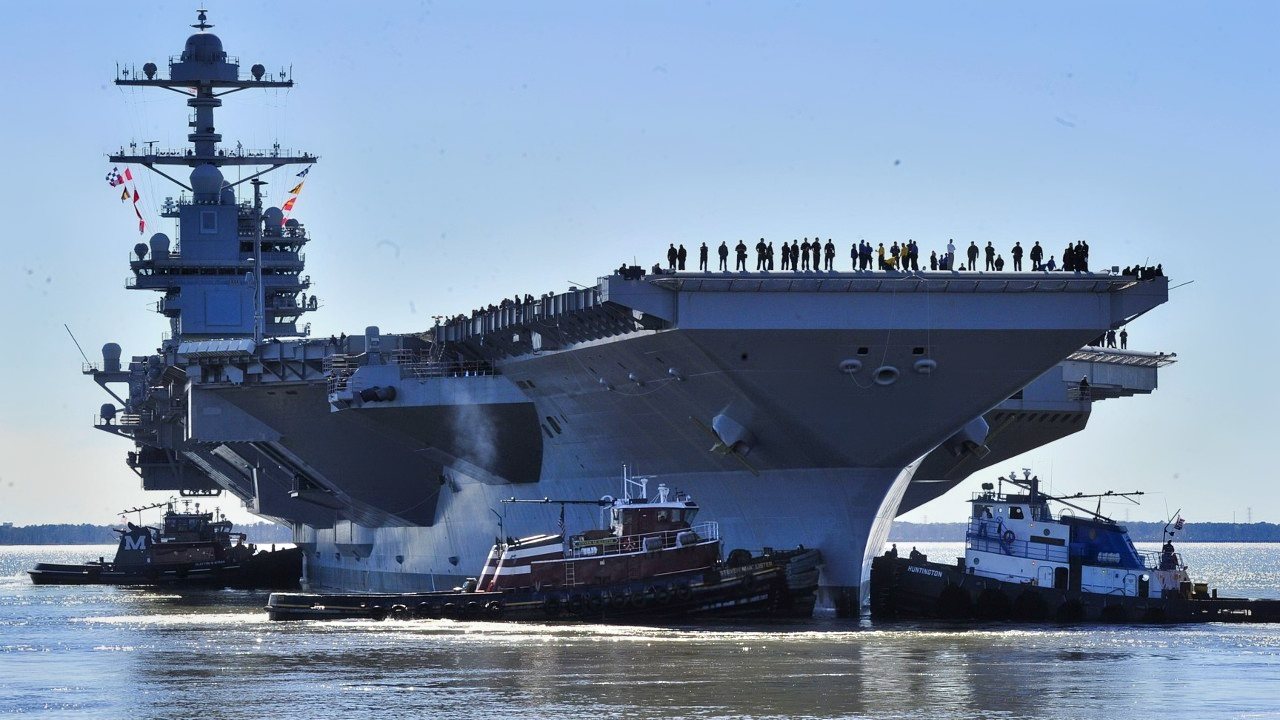
The Navy says that the Ford-class carriers are designed to be more efficient and have a higher sortie generation rate than their Nimitz-class predecessors. The ship’s design allows for a more efficient flow of aircraft, fuel, and ordnance, which helps to increase the number of aircraft that can be launched and recovered in a given time period.
Understanding the Ford-Class Capabilities
Yet, the real challenge to U.S. aircraft carriers today, regardless of their class, is enemy anti-access/area-denial (A2/AD) capabilities that are meant to blunt the power projection capabilities of U.S. aircraft carriers by keeping them outside of the operational range of their air wings (meaning that they are rendered combat ineffective).
The Ford-class carriers are equipped with a bevy of new, advanced technologies meant to augment their operations, including things like the Electromagnetic Aircraft Launch System (EMALS) and the Advanced Arresting Gear (AAG), which are designed to improve the efficiency and safety of aircraft launch and recovery operations.
A single Ford-class carrier costs more than $13 billion to build. It will cost hundreds of millions of dollars more to maintain over the course of its service. The Navy insists that the maintenance costs for the Ford-class will be lower than those of the older Nimitz-class carriers.
But that remains very much in doubt.
Because of the inclusion of so many advanced, and frankly untested, systems supporting the new carrier’s operations, the USS Gerald R. Ford (CVN-78) has already faced several issues since its commissioning in 2017. Such issues have increased the cost of the warship and even delayed its entry into service, creating significant strategic gaps in the Navy’s surface fleet disposition and capabilities.
Complications for the Ford-Class
Some notable problems included reliability issues afflicting the aforementioned EMALS and AAG launch systems. The EMALS has had a failure rate that places it well below expectations and the AAG, designed to catch landing aircraft, has experienced similar reliability issues. This, of course, means that the safety of naval aviators—and their expensive aircraft—is put in significant jeopardy.
Meanwhile, the Ford-class weapons elevators have malfunctioned more than they have performed as expected. There are eleven advanced weapons elevators (AWEs) meant to rapidly move bombs and missiles from the ship’s magazines to the flight deck. In a heavy firefight, in which the safety of the warship itself was in question—or in which the ship’s airwing was called upon to engage in massive deployments—failure of these AWEs could lead to the destruction of the warship in battle and the defeat of the United States Navy.
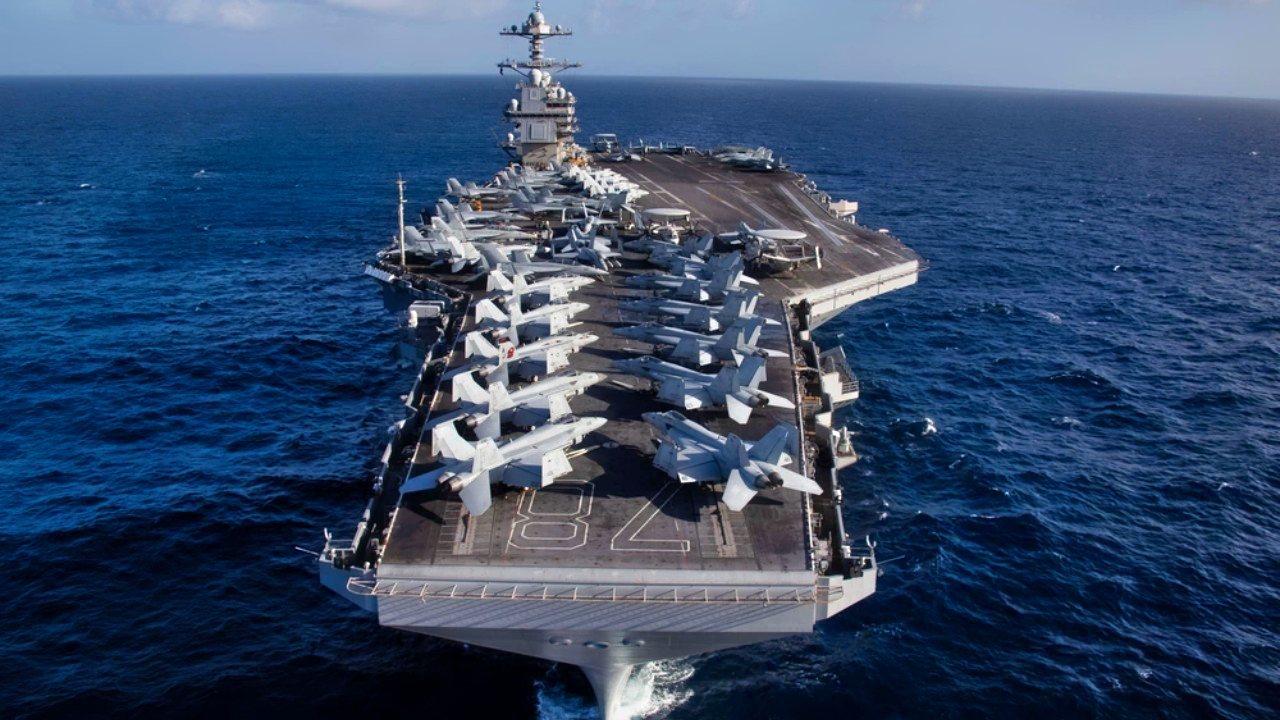
Jet Blast Deflectors (JBD) protect the flight deck from the intense heat generated by aircraft engines during takeoff. These systems have struggled with reliability problems, notably regarding their electromechanical actuator subsystems. Again, even without the threat of enemy A2/AD fire damaging the carrier’s critical flight deck, if the deck is not protected from the wear-and-tear of combat operations, it won’t last long in combat, making the carrier a wasting asset.
Because of these issues, there have been significant cost overruns and delays, prompting many analysts to question whether the investment into the Ford class was even worth the price tag. It likely was not.
More Ford-class Carriers to Be Added
There are currently three Ford-class carriers being built, with two more planned for the future. Of those carriers, the USS Gerald R. Ford is actively serving in the fleet, even recently being deployed to the Eastern Mediterranean in response to the horrific Hamas attacks against Israel on October 7, 2023. The USS John F. Kennedy (CVN-79), the USS Enterprise (CVN-8), and the USS Doris Miller (CVN-81) are all in the construction pipeline.
Higher sortie rates, greater technology, and an impressive flanking speed make these carriers appealing to the U.S. Navy. It remains to be seen, however, whether these carriers will overcome the serious—and growing—A2/AD challenge posed by America’s rivals, notably China.
Author Experience and Expertise: Brandon J. Weichert
Brandon J. Weichert, a National Interest national security analyst, is a former Congressional staffer and geopolitical analyst who is a contributor at The Washington Times, the Asia Times, and The-Pipeline. He is the author of Winning Space: How America Remains a Superpower, Biohacked: China’s Race to Control Life, and The Shadow War: Iran’s Quest for Supremacy. His next book, A Disaster of Our Own Making: How the West Lost Ukraine, is due October 22 from Encounter Books. Weichert can be followed via Twitter @WeTheBrandon.
All images are Creative Commons or Shutterstock. All photos are of various submarine styles.
From the Vault
Russia Freaked Out: Why the U.S. Navy ‘Unretired’ the Iowa-Class Battleships
Battleship vs. Battlecruiser: Iowa-Class vs. Russia’s Kirov-Class (Who Wins?)

